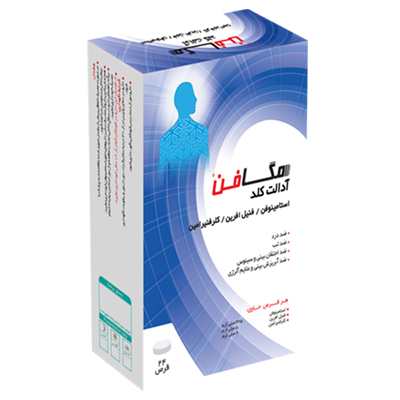Skin biopsy for psoriasis is one of the key steps in the accurate and scientific diagnosis of this skin disease. Psoriasis, which is a chronic autoimmune skin disease, requires accurate diagnosis and differentiation from other similar skin diseases. Skin biopsy, as a definitive diagnostic method, allows for a detailed examination of the structure and tissues of the skin. This method not only helps confirm the clinical diagnosis but can also provide the doctor with important information about the severity and type of psoriasis.
The importance of skin biopsy for psoriasis becomes more apparent when, in some cases, the clinical symptoms of the disease are such that the doctor cannot reach a final diagnosis based solely on a physical examination. In this case, performing a skin biopsy is a scientific, safe, and effective method.
In a skin biopsy for psoriasis, the doctor removes a piece of the patient's skin and sends it to a pathology lab to examine the cellular and structural changes under a microscope using specialized techniques. This process helps differentiate psoriasis from conditions that have similar appearances, such as seborrheic dermatitis, eczema, and cutaneous lupus.
Definition of psoriasis and the role of skin biopsy for psoriasis in its diagnosis
Psoriasis is a chronic autoimmune disease that causes inflammation and scaling of the skin. It is usually characterized by the appearance of red, scaly plaques. However, many skin diseases have similar symptoms, and this similarity makes it difficult to make an accurate, scientific diagnosis. Comprehensive review on psoriasis Study.
This is where skin biopsy for psoriasis becomes crucial. A skin biopsy involves removing a small piece of skin, which is sent to a laboratory and carefully examined under a microscope. Examining the skin samples for cellular structure, epidermal thickness, type of inflammation, and other changes can confirm or rule out a diagnosis of psoriasis.
In cases where psoriasis is confused with similar diseases such as seborrheic dermatitis, eczema, and cutaneous lupus, a skin biopsy for psoriasis helps the doctor to: Proper treatment for psoriasis and determine the specifics and prevent medical errors.
The importance of skin biopsy for psoriasis in accurate diagnosis
Diagnosing psoriasis based solely on clinical symptoms can sometimes be misleading, as many similar skin conditions have similar symptoms. Skin biopsy is important for psoriasis because it allows the doctor to see the exact tissue and cellular changes.
This highly accurate diagnostic method can differentiate psoriasis from similar diseases that require different treatments. Skin biopsy for psoriasis can also help diagnose a specific type of psoriasis, such as plaque, guttate, or pustular psoriasis, which can affect the treatment process.
Types of skin sampling methods for psoriasis
Skin sampling for psoriasis has different methods, depending on the type of lesion and its location. Choosing the right method for sampling is very important to obtain a quality and testable sample. Common methods for this type of diagnosis are listed below:
- Punch biopsy: A circular tool that removes a small cylindrical sample of skin. Suitable for deeper lesions and enough tissue for examination.
- Scraping biopsy: Removal of the surface layers of the skin with a special surgical blade, used for superficial, red lesions.
- Excisional biopsy: Removal of a larger piece of skin that allows for a more detailed examination of the skin layers.
| Main application | Benefits | Disadvantages | Type of biopsy |
| Deeper and smaller lesions | Cylindrical sample, accurate | Minor pain, possible bleeding | Punch biopsy |
| Superficial and crusted lesions | Fast and minimally invasive | Less sample for depth | Scraping biopsy |
| Large and complex lesions | A larger, more comprehensive sample | Need for stitches, time consuming | Excisional biopsy |
The choice of the appropriate skin sampling method for psoriasis is determined by the doctor, depending on the patient's condition and the location of the lesion.
Patient preparation before skin biopsy for psoriasis
Before performing a skin biopsy for psoriasis, it is essential to prepare the patient to ensure that the sample collection process is safe and without complications. At this stage, the doctor must obtain detailed information about the patient's health status, medications, and allergies. For example, taking blood thinners or having clotting problems can increase the risk of bleeding after the biopsy.
Since proper preparation increases the success of skin biopsy for psoriasis and reduces complications, it is highly recommended. Patients are advised to avoid taking certain medications, such as aspirin or blood thinners, for at least 24 hours before the biopsy (with the doctor's approval). Also, hygiene of the sample collection site should be maintained to prevent infection. Key preparation tips:
- Cleanliness of the sampling site
- Knowledge of history of allergies and diseases
- Avoid blood thinners (after medical consultation)
- Patient comfort and complete explanation of the sampling process to reduce stress
The process of performing a skin biopsy for psoriasis
A skin biopsy for psoriasis is usually performed under local anesthesia. First, the doctor cleans the area with antiseptics, then a local anesthetic is injected so that the patient does not feel any pain. Next, depending on the type of biopsy chosen, the doctor carefully removes a sample of skin. This process usually takes between 5 and 15 minutes and, depending on the size of the sample, stitches may be required. After the sample is removed, the site of the sample is bandaged and the patient is instructed on how to care for it. The sample is sent to a laboratory for histological examination.
Safety and hygiene tips for skin sampling for psoriasis
It is vital to follow safety and hygiene guidelines when taking a skin sample for psoriasis. The use of sterile instruments, gloves, and a mask by the doctor prevents secondary infections. The site of the sample should also be thoroughly disinfected. After the sample is taken, it is important to care for the site to prevent infection and bleeding.
The patient should keep the site of the biopsy dry and avoid scratching or squeezing it. If you notice signs of infection such as redness, swelling, severe pain, or discharge, you should see a doctor immediately.
Possible complications of skin biopsy for psoriasis
Although this procedure is relatively safe, it may have some complications that can be minimized with proper post-procedure care. Here are some of them:
- Infection: If hygiene is not maintained, the sampling site may become infected.
- Scar: In some cases, the biopsy site may remain as a small wound.
- Pain and discomfort: Usually, after anesthesia, pain is mild and can be controlled with painkillers.
- Bleeding: Usually minor and short-lived, but the risk of bleeding increases if you take blood-thinning medications.
Differences in skin biopsy for psoriasis in children and adults
Skin sampling for psoriasis in children has some differences from adults that need to be considered. In children, the skin is more sensitive and the sampling requires special care to reduce pain and anxiety. Local anesthesia should be used carefully and in the appropriate dose. Also, the sample size should be smaller and less invasive to minimize skin damage. Post-sampling care in children should be more careful to prevent infection and complications.
In adults, this process can usually take larger, more detailed samples that provide more comprehensive information. However, both groups should be supervised by a specialist when performing a skin biopsy for psoriasis for the best results.
Costs and timing of skin biopsy for psoriasis
The cost of a skin biopsy for psoriasis depends on several factors, including the type of biopsy, where the biopsy is taken, the doctor's fee, and pathology lab fees. Punch or scraping biopsies are usually less expensive than incisional biopsies.
The time it takes to perform a skin biopsy for psoriasis is short, usually less than 30 minutes. After the biopsy is sent to the laboratory, it may take a few days to a week for the final report to be ready. It is best for patients to coordinate costs and timing with their doctor before having the biopsy so that they can plan accordingly.
Comparing skin biopsy for psoriasis with other diagnostic methods
There are several different methods for diagnosing psoriasis, each with its own advantages and limitations. Below is a more complete explanation of how these methods compare to psoriasis biopsy. Other methods for diagnosing psoriasis:
Clinical examination by a dermatologist: A doctor can largely diagnose the condition by examining the appearance of the skin lesions, their location, thickness, and shape of the plaques. However, in some cases, diagnosis is difficult by examination alone.
Blood tests: Blood tests are sometimes used to rule out other inflammatory or autoimmune diseases. However, there is no specific blood test that can definitively confirm psoriasis.
Skin Allergy Tests (Patch Test): To find out The difference between psoriasis and contact dermatitis or eczema It may be used. This test alone cannot determine the presence or absence of psoriasis.
Skin imaging (such as dermoscopy or digital photography): Helps identify specific patterns in the skin, but is only suitable for supplementing the visual examination and does not provide histological or cellular information.
Advantages of skin biopsy for psoriasis over other methods:
- Detailed examination of skin tissue at the cellular level: The only method capable of histological examination and evaluation of the microscopic structures of the skin.
- Definitive confirmation of the diagnosis of psoriasis: It can identify key features such as epidermal hypertrophy, parakeratosis, and Monro microabscesses.
- Differences between psoriasis and similar diseases: such as cutaneous lupus, chronic eczema, seborrheic dermatitis, or other autoimmune diseases.
- Establish a more accurate treatment path: The biopsy result can determine the severity of the disease, Type of psoriasis (plaque, inverse, drop, etc.) and the presence of inflammation, which is effective in choosing the type of medication (topical, systemic, biological).
A combination of methods is usually performed to better diagnose. The combination of clinical examination + skin biopsy for psoriasis usually provides the highest diagnostic accuracy. The use of imaging or additional tests can give the doctor a broader view, but they are never a substitute for biopsy.
In suspected or treatment-resistant cases, skin biopsy for psoriasis is the best tool to rule out or confirm this condition.
Psoriasis biopsy and the importance of follow-up
After a biopsy for psoriasis, regular follow-ups are necessary to check the site of the biopsy and receive test results. Follow-ups allow the doctor to assess the patient's condition and continue or change appropriate treatment. If complications, such as infection or scarring, occur, the doctor can take the necessary treatment measures. Also, ongoing follow-up is important to monitor the progression of the disease and response to treatment.
Conclusion and final points about biopsy for psoriasis
Skin sampling for psoriasis is a key and specialized method in the accurate and scientific diagnosis of this disease. This method helps doctors differentiate psoriasis from similar diseases and determine targeted and effective treatment for patients. Observing safety precautions, choosing the appropriate sampling method and aftercare can minimize possible complications. Technological advances in this field have also improved the quality of psoriasis diagnosis and treatment.
Given the importance of skin sampling for psoriasis in diagnosis and treatment, it is recommended that if you observe suspicious symptoms, you should definitely see a specialist and have this test performed to receive the best possible care.




